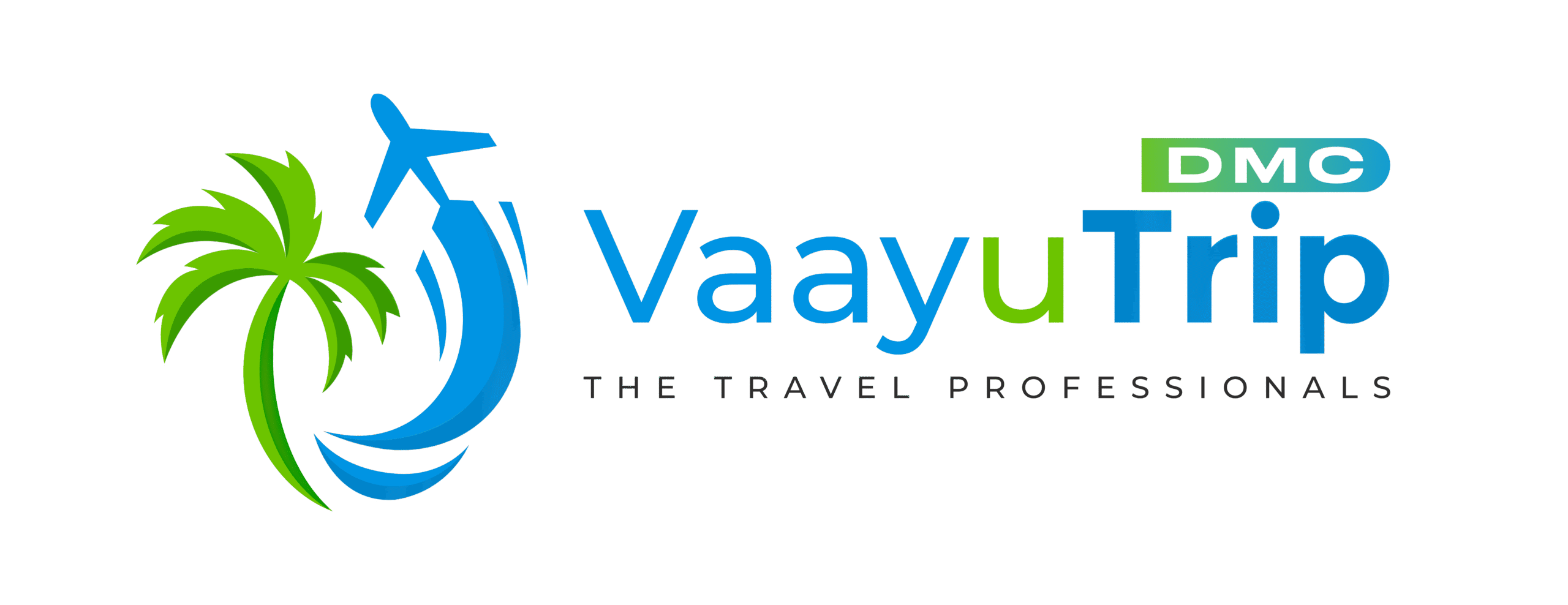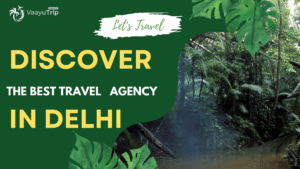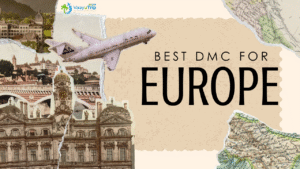In today’s hyperconnected global travel landscape, the line between brand identity and operational delivery is blurring. A well-positioned b2b travel agency spends years building a client base, crafting unique journeys, and fostering loyalty. Yet it’s often the Destination Management Company (DMC)—the on-ground executor—that owns the final impression.
This leads to a powerful industry shift: your DMC becomes the brand your customer remembers, not you. It’s an invisible takeover, a branding sleight of hand. And in 2025, agencies like Vaayutrip are actively examining how to manage this growing phenomenon known as the Shadow Brand.

Section 1:What Is a Shadow Brand in B2B Travel?
A Shadow Brand emerges when the actual deliverer of the experience—the DMC—receives greater brand recognition than the b2b travel agency that sold the trip. The brand perception flips, unintentionally.
Common Signs of a Shadow Brand:
-
The traveler praises the DMC guide but forgets who booked the package.
-
All trip communication post-arrival is with the DMC, not your agency.
-
Repeat bookings go directly to the supplier, bypassing your brand.
For agencies like Vaayutrip, understanding this silent branding leak is essential to protect long-term value and client ownership.

Section 2: Why DMCs Are Stealing the Spotlight
1. Operational Visibility
Travelers associate the experience with those they physically interact with. From the airport pickup to the farewell dinner, it’s the DMC—not the b2b travel agency—in front of them.
2. Local Trust and Hero Moments
Travelers often bond emotionally with guides and local reps during problem-solving or special moments. These high-trust interactions create enduring memory associations—none of which involve the agency’s name.
3. Direct Channels of Communication
DMCs now use WhatsApp, Google Maps, and local concierge-style check-ins. Without co-branding, all the brand credit flows to them.
4. No On-Ground Branding from the Agency
Unless the agency like Vaayutrip insists on co-branded signage or merchandise, the traveler may never even see the agency’s logo during the journey.
Section 3: The Real Risks for a B2B Travel Agency
1. Brand Dilution
If every delightful interaction is associated with the DMC, your b2b travel agency fades into the background. This lowers word-of-mouth referrals and repeat engagement.
2. Client Leakage
A satisfied traveler might bypass you and go directly to the DMC next time. Without contractual protections or strategic agreements, this becomes a real threat.
3. Price Transparency Problems
When the client sees the same itinerary offered directly by the DMC (often cheaper), you risk losing both margin and credibility.
4. Loss of Strategic Leverage
A powerful DMC with strong traveler loyalty can negotiate from a position of strength. You lose influence in pricing, customization, and priority services.
Section 4: How Leading B2B Travel Agencies Like Vaayutrip Respond
Not every agency suffers equally from shadow branding. Those proactively managing supplier visibility are turning the challenge into competitive advantage.
1. On-Ground Co-Branding
Agencies like Vaayutrip work with their DMCs to ensure co-branded welcome boards, uniforms, and in-room collateral. This keeps the b2b travel agency name present throughout the guest journey.
2. Tech-Led Interfaces
Smart agencies use custom-branded mobile apps, digital welcome kits, and AI travel assistants that remain with the guest before, during, and after the trip. This digital touch keeps the agency front and center.
3. Branded Pre-Departure Experiences
A fully branded welcome box, custom luggage tags, and a virtual travel briefing room reinforce the agency’s role. These memorable moments can’t be outsourced to a DMC.
4. Client Experience Ownership
Post-trip surveys, WhatsApp re-engagements, and review requests are controlled by the agency. Not only does this generate feedback—it reminds the traveler who made the magic happen.

Section 5: White Labeling vs. Shadow Branding
There’s an important distinction between white labeling and shadow branding:
-
White Labeling is intentional. You permit another brand (like your B2B partners) to appear as the lead provider.
-
Shadow Branding is accidental. It happens when your supplier overshadows your visibility.
Agencies like Vaayutrip have learned to offer white label solutions to B2B partners, while carefully curating their own B2C visibility when operating under their own name.
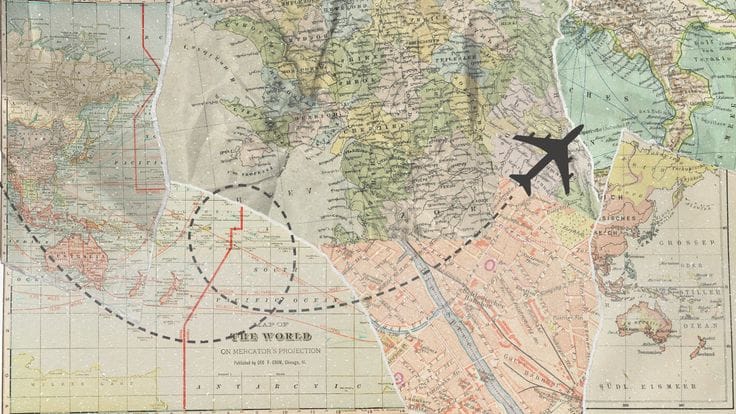
Section 6: Should You Embrace or Eliminate the Shadow?
Some b2b travel agencies choose to operate fully in the background—as logistics engines or white label providers. For them, shadow branding isn’t a problem.
But for agencies building a direct-facing brand, this is a silent threat.
Ask yourself:
-
Who owns the traveler’s trust?
-
Who will the client rebook with?
-
Who gets the referral?
If your answer isn’t you, then it’s time to reconsider your supplier relationships, branding mandates, and customer engagement design.
Section 7: Strategic Solutions to Reclaim Your Brand
Here’s a blueprint inspired by agencies like Vaayutrip that are rebalancing brand visibility:
| Solution | Description |
|---|---|
| DMC Partnership Agreements | Include branding clauses and no-compete terms in all contracts. |
| Brand Audits | Track where and how your brand appears throughout the travel journey. |
| Referral Redirection | Ensure all rebooking links, QR codes, or concierge cards lead back to your agency—not the DMC. |
| Traveler Education | Make the traveler aware—gently—that you’re the orchestrator behind the scenes. |
| Branded Loyalty Programs | Offer loyalty points or perks that require travelers to return to your platform. |
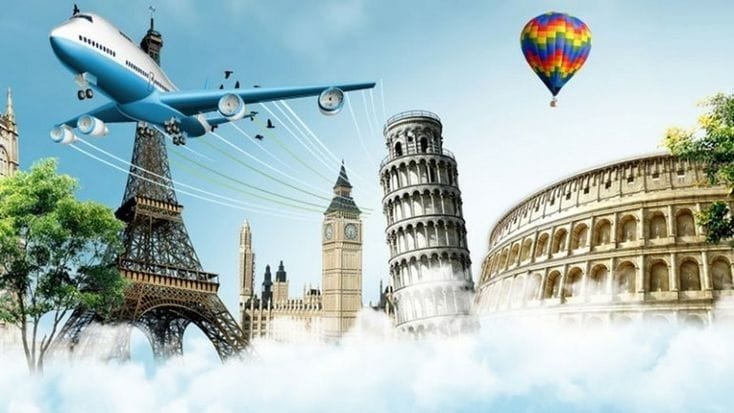
Conclusion: It’s Time to Own the Experience
In 2025, being a b2b travel agency is no longer about access and rates. It’s about owning the brand relationship, the customer experience, and the loyalty loop.
DMCs will always be vital—they are the heartbeat of travel delivery. But they shouldn’t become the face of your business unless you decide so. Agencies like Vaayutrip are showing that it’s possible to build strong supplier relationships without surrendering your brand.
The Shadow Brand is real—but it doesn’t have to define your future.
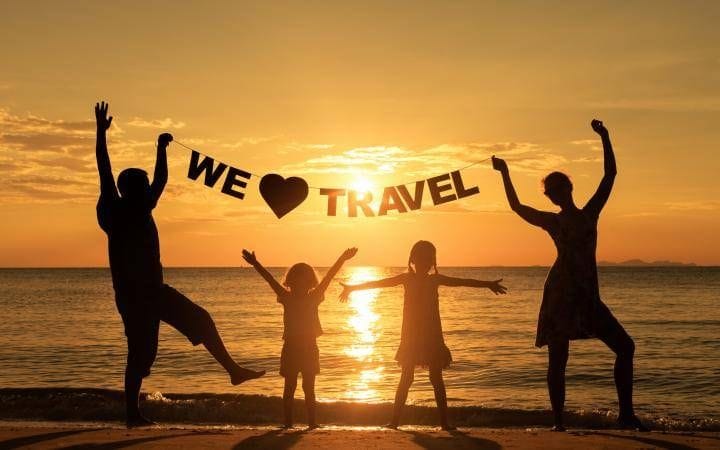
FAQs
Q1: What if my DMC refuses to follow brand guidelines?
If a DMC is unwilling to co-brand, they may not be the right partner for your business model. Agencies working with Vaayutrip benefit from pre-vetted DMCs who align with branding expectations from day one.
Q2: How can a small b2b travel agency maintain brand control while using white-label DMC services?
Use white-label portals, custom email sequences, and traveler apps branded with your logo. Vaayutrip provides all of this, ensuring your brand is the one clients remember — even if the service is executed by a partner.
Discover how DMCs are becoming the real face of B2B travel brands — and how Vaayutrip helps b2b travel agencies retain control in 2025.
Disclaimer:
This blog is intended solely for informational purposes and does not necessarily reflect the official views, strategies, or offerings of Vaayutrip. Any references to industry practices or third-party trends are based on general research and are not endorsements or representations of any specific travel company.
